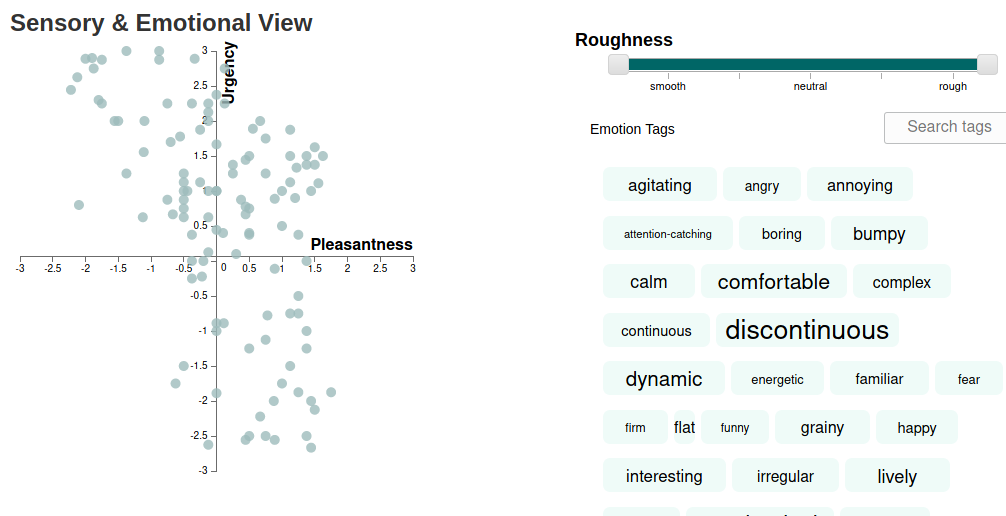VibViz

Tool Summary
| Metadata | |
|---|---|
| Release Yearⓘ The year a tool was first publicly released or discussed in an academic paper. | 2015 |
| Platformⓘ The OS or software framework needed to run the tool. | Web |
| Availabilityⓘ If the tool can be obtained by the public. | Available |
| Licenseⓘ Tye type of license applied to the tool. | Open Source (BSD 3-Clause) |
| Venueⓘ The venue(s) for publications. | IEEE WHC |
| Intended Use Caseⓘ The primary purposes for which the tool was developed. | Prototyping |
| Hardware Information | |
|---|---|
| Categoryⓘ The general types of haptic output devices controlled by the tool. | Vibrotactile |
| Abstractionⓘ How broad the type of hardware support is for a tool.
| Class |
| Device Namesⓘ The hardware supported by the tool. This may be incomplete. | Voice Coil |
| Device Templateⓘ Whether support can be easily extended to new types of devices. | No |
| Body Positionⓘ Parts of the body where stimuli are felt, if the tool explicitly shows this. | N/A |
| Interaction Information | |
|---|---|
| Driving Featureⓘ If haptic content is controlled over time, by other actions, or both. | Time |
| Effect Localizationⓘ How the desired location of stimuli is mapped to the device.
| Device-centric |
| Non-Haptic Mediaⓘ Support for non-haptic media in the workspace, even if just to aid in manual synchronization. | None |
| Iterative Playbackⓘ If haptic effects can be played back from the tool to aid in the design process. | Yes |
| Design Approachesⓘ Broadly, the methods available to create a desired effect.
| Library, Description |
| UI Metaphorsⓘ Common UI metaphors that define how a user interacts with a tool.
| Generic Menu |
| Storageⓘ How data is stored for import/export or internally to the software. | WAV |
| Connectivityⓘ How the tool can be extended to support new data, devices, and software. | None |
Additional Information
VibViz is a library of vibrotactile effects and associated filtering and visualization tools to find elements within it. Each effect is associated with various tags representing emotions (“angry”), metaphors (“heartbeat”), and possible uses (“alarm”) that can be used to filter the library. Two chart visualizations lay out the effects by duration and signal RMS, and by pleasantness and urgency. Additional filters are available for selecting effects with a specific tempo, rhythm structure, and roughness. A complete list of the effects in the library is present showing each one’s metaphor and usage tags along with a visualization of intensity over time. Selected effects are played as audio outputs, allowing them to be displayed on a connected actuator.
For more information on VibViz, consult the 2015 World Haptics Conference paper, the VibViz website, and the GitHub repository.